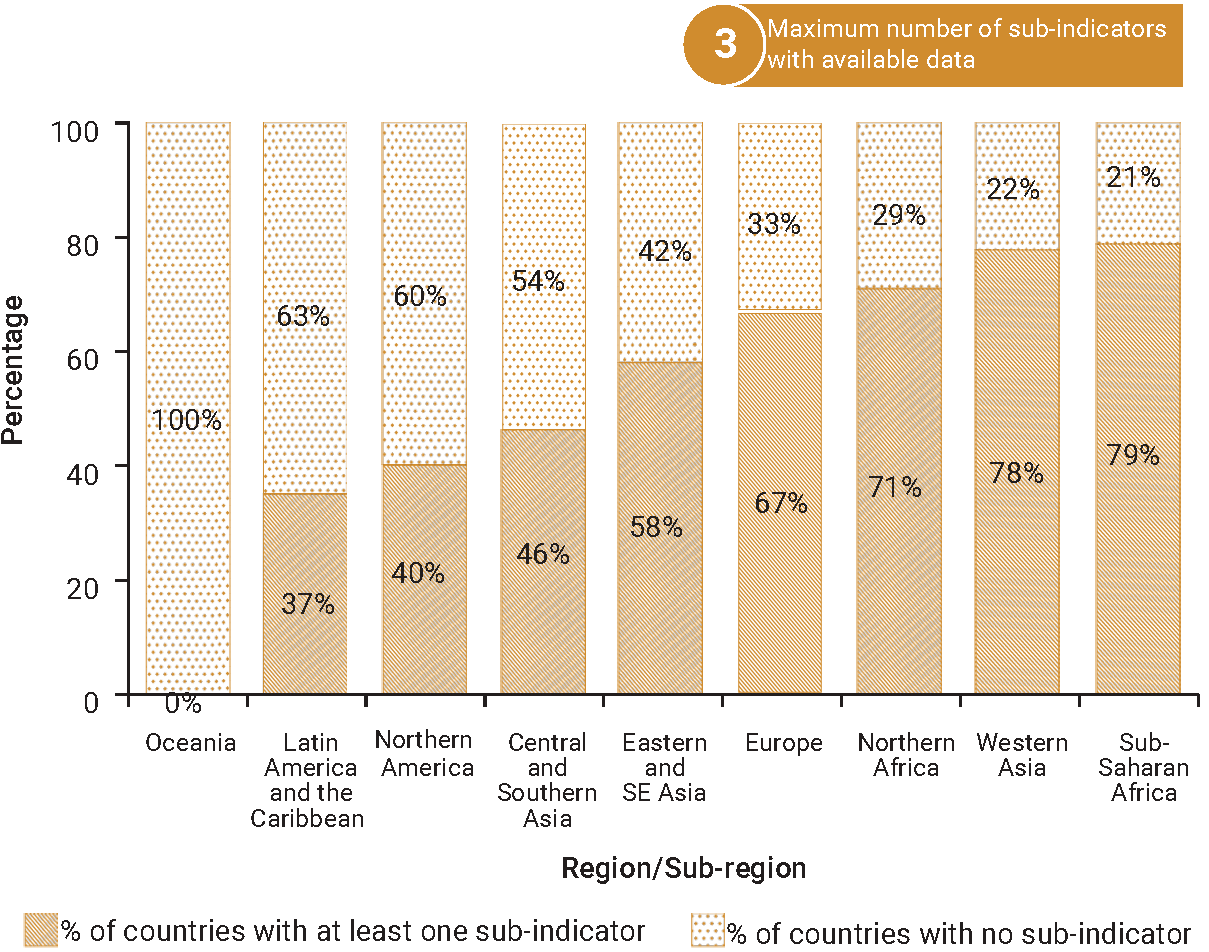SDG Indicator 6.5.2: Proportion of transboundary basin area with an operational arrangement for water cooperation[*]
1. Key features and metadata
Definition: This indicator measures the percentage of a transboundary basin area within a country, including river, lake and aquifer systems, covered by an operational arrangement for water cooperation.
| Sub-indicator | Disaggregated by |
|---|---|
|
EG_TBA_H2CO Proportion of transboundary basins (river and lake basins and aquifers) with an operational arrangement for water cooperation (%) |
No current data disaggregation available.
|
|
EG_TBA_H2COAQ Proportion of transboundary aquifers with an operational arrangement for water cooperation (%) |
|
|
EG_TBA_H2CORL Proportion of transboundary river and lake basins with an operational arrangement for water cooperation (%) |
Sources of information: Data is compiled by relevant national line ministries and institutions responsible for water resources (e.g. Water, Environment, Natural Resources, Hydrology, and Geology).
Related SDG Indicators: All other SDG 6 indicators and more specifically 6.5.1 (Degree of integrated water resources management).
2. Data availability by region, SDG Global Database, as of 02 July 2025

3. Proposed disaggregation, links to policymaking and its impact
| Proposed disaggregation | Link to policymaking | Impact |
|---|---|---|
| Proportion of transboundary wetlands with an operational arrangement for water cooperation (%) |
This disaggregation tracks operational arrangements for transboundary wetlands water cooperation. It helps identify gaps where operational arrangements are still not in place to cover wetlands that are geographically located in multiple countries or territories. This calls for political will and effective legal and institutional frameworks combined with efforts to accelerate progress on IWRM and greater participation as well as mobilization of expertise and funds (UN 2022a). It is aligned with the Convention on the Protection and Use of Transboundary Watercourses and International Lakes (United Nations Economic Commission for Europe [UNECE] 1992), Ramsar Convention (Ramsar Convention on Wetlands n.d.) and contributes to the UN Water Action Decade (UN-GA resolution 71/222) (UNGA 2017b) and the SDG 6 Global Acceleration Framework (UN-Water 2020). |
Wetlands are at risk and are in continuous decline due to over-exploitation, conversion to agricultural lands and mismanagement of water resources. The lack of cooperation in managing transboundary wetlands can result in damaging consequences such as violent conflicts due to competing interests, loss of income for farmers, herders and fishers as well as loss of food, fuel and fibers (Rosenblum & Schmeier, 2022). Conversely, enhancing transboundary water cooperation (through dialogue strengthening, setting common goals, investment programmes, data exchange, and regular communication), is likely to generate multiple benefits in terms of conflict prevention, peace and security, human health and well-being, poverty alleviation, food security, sustained economies, and ecosystem protection (sustaining species and ecological functions) by securing access to water in both quality and quantity and maintaining healthy ecosystems (UNECE and UNESCO 2021). |
[*]The proposed disaggregation of this indicator was not endorsed by UNECE and UNESCO, the custodian agencies for this indicator.

